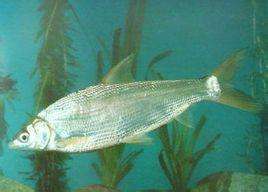Anabarilius transmontana, a species of fish belonging to the Cyprinidae family, is endemic to China.

Anabarilius transmontana is a small fish that likes to live in slow-flowing water environments and can grow and reproduce in lakes or rivers. It was once an important fishery target in Datun Lake in Yunnan. Due to the drying up of the lake several times, this species of fish is almost extinct.
Listed in the second level of the "List of National Key Protected Wildlife in China".
Protect wild animals and eliminate game.
Maintaining ecological balance is everyone's responsibility!